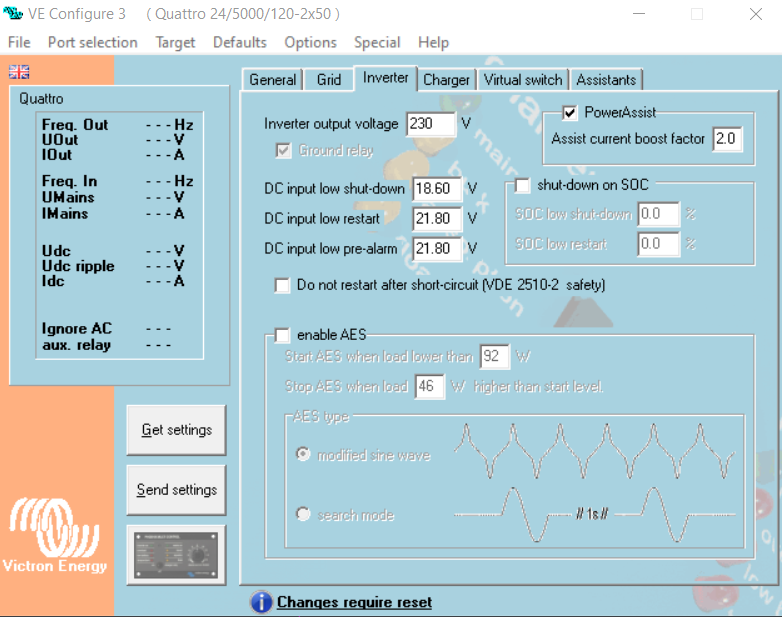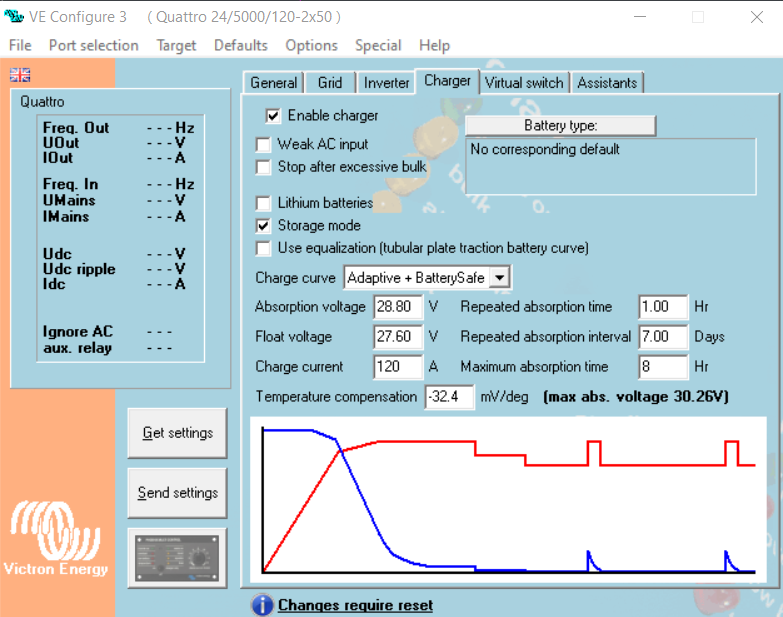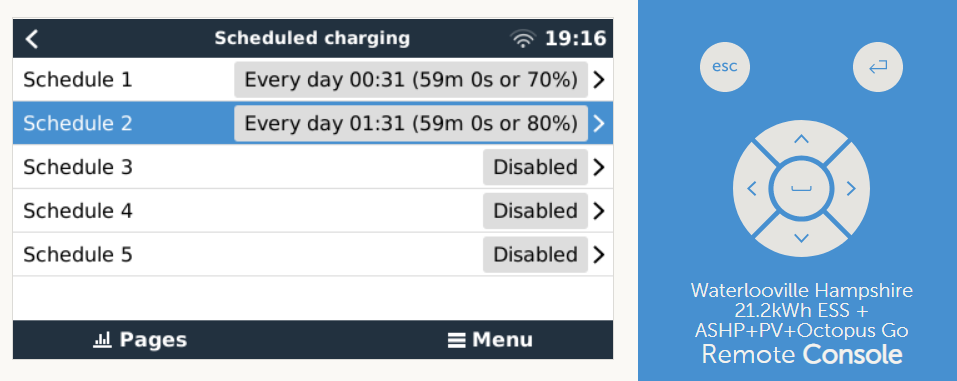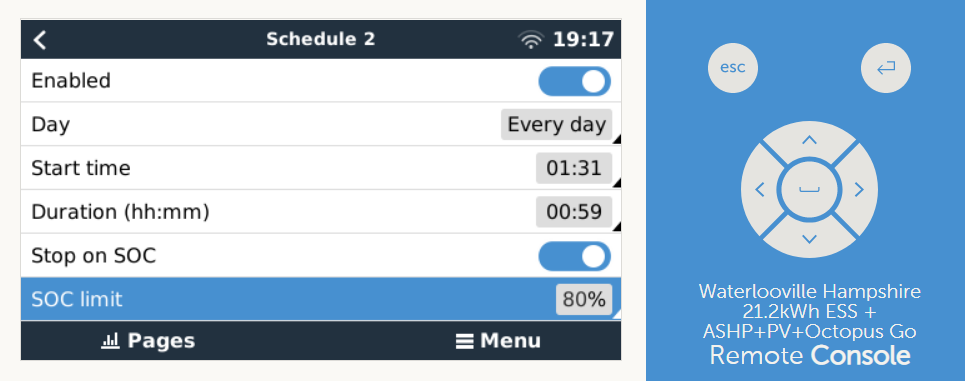Good afternoon.
I want to update my apartment's backup power system, so for example, I want to use my own batteries that I already have and not buy.
Here are a few questions that I could not find answers to in the manual and other resources:
1) I have two electricity tariffs and would like to be able to prioritize charging and full grid operation between 11 pm and 7 am. And in the afternoon or in the evening, be able to gradually "mix" the city network with energy from batteries. Is it possible? Let's say that from 7 am to 11 pm the energy of the batteries will be supplied in the amount of 15% of the consumed load, i.e. joint work of the utility network and batteries?
2) I have LiFePo4 batteries, I have 2 sets of 24v 150A batteries i.e. I can collect either 48v 150A or 24v 300A. But my batteries are with an autonomous controller and their charge voltage is 29.6v.
I know that your company does not welcome the use of third-party batteries, but I already have them, bought them assembled and they still have a lot of warranty.
Actually the question
2.1) Will your MultiPlus-II calculate their residual capacity or will the shutdown and transfer to mains operation be implemented only by voltage? In some resources, I saw that they write that your device, if you specify the full volume of the battery, it will itself arithmetic consider the remaining%(SoC). Or do I need to buy a shunt to work correctly?
2.2) If you program your MultiPlus-II by voltage, can you specify the voltage of the transition to the utility network with an accuracy of 0.1V or only with an accuracy of an integer volt value? (The same applies to the voltage of full and floating charge)
Batteries charge up to 29.6 volts and shut down completely at 25,5 volts. In this case, the voltage may drop even lower, but as soon as the load decreases, the voltage will increase and it will be so until they completely use up their charge. In fact, I have more than 7kW of energy and I would very much like to be able to charge at night, replenish with solar energy during the day (there are no solar panels yet - I’m just planning a system, but there won’t be many of them, literally 2-4 panels), but I understand that to completely abandon the city utility network 230v I can’t, so I really want to be able to use the city network and batteries exclusively during the day, and charge them at night.
But I don’t want to discharge the battery by more than 50%, so I need smart and correct coordination of my batteries with the inverter.
Sorry for writing in such detail, thanks and waiting for an answer.





